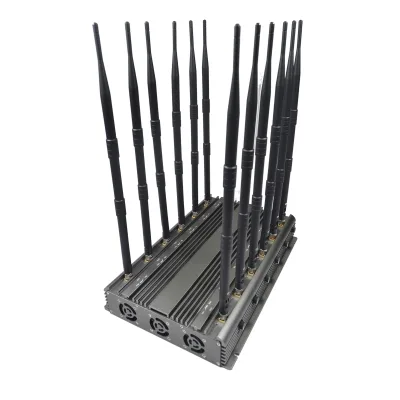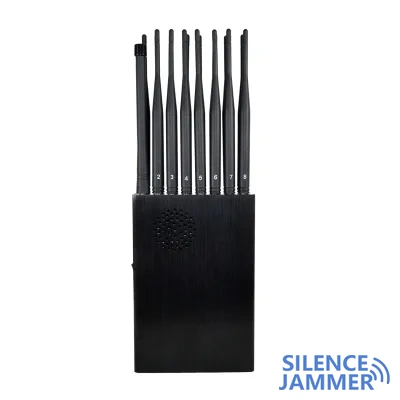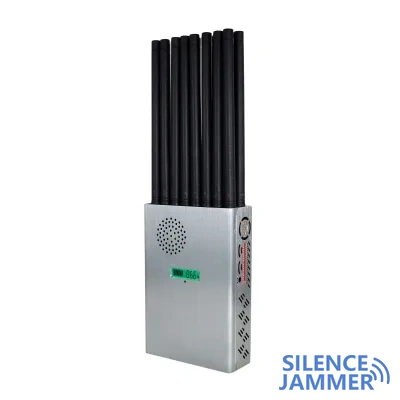U.S. Signal Jammer Device Policies
The major mobile operators in the United States and their 3G, 4G and 5G signal standards are as follows:
Major mobile operators
- Verizon Wireless
- American Telephone And Telegraph
- T-Mobile
- Dish Wireless
3G signal standards
3G is mainly based on UMTS (Universal Mobile Telecommunications System) and CDMA2000 technologies.
- UMTS (Universal Mobile Telecommunications System)
- CDMA2000
Frequency bands used: 850 MHz (Band 5), 1700/2100 MHz (Band 4), 1900 MHz (Band 2)
Major operators: American Telephone And Telegraph, T-Mobile
Frequency bands used: 850 MHz (Band 5), 1900 MHz (Band 2)
Major operators: Verizon (phased out), Sprint (now part of T-Mobile, phased out)
4G LTE signal standards
4G LTE (Long Term Evolution) is a widely adopted mobile communication standard in the world, providing high-speed data transmission.
LTE BandsVerizon: Bands 2, 4, 5, 13, 66
American Telephone And Telegraph: Bands 2, 4, 5, 12, 14, 17, 29, 30, 66
T-Mobile: Bands 2, 4, 5, 12, 66, 71
Dish Wireless: Bands to be determined, plans to use 4G and 5G technology

5G signal standards
5G uses multiple frequency bands, including low-band, mid-band and high-band (millimeter wave), to provide wide coverage and high bandwidth.
5G NR (New Radio)
- Low band (Sub-1 GHz)
- Mid-band (1-6 GHz)
- High band (millimeter wave, 24 GHz and above)
- Verizon Wireless
- T-Mobile
- Dish Wireless
600 MHz (Band n71): T-Mobile
700 MHz (Band n12): American Telephone And Telegraph
850 MHz (Band n5): American Telephone And Telegraph, T-Mobile
2.5 GHz (Band n41): T-Mobile
3.5 GHz (C-Band, Band n77/n78): Verizon, American Telephone And Telegraph
24 GHz (Band n258), 28 GHz (Band n261), 39 GHz (Band n260): Verizon, American Telephone And Telegraph, T-Mobile

5G layout of each operator
Low band: 850 MHz (Band n5)
Mid-band: C-Band (3.7-4.2 GHz)
High band: mmWave (24 GHz, 28 GHz, 39 GHz)
American Telephone And Telegraph
Low band: 700 MHz (Band n12), 850 MHz (Band n5)
Mid band: C-Band (3.7-4.2 GHz)
High band: mmWave (24 GHz, 39 GHz)
Low band: 600 MHz (Band n71), 700 MHz (Band n12), 850 MHz (Band n5)
Mid band: 2.5 GHz (Band n41)
High band: mmWave (24 GHz, 28 GHz, 39 GHz)
Dish is building out its 5G network, which is expected to use low and mid band frequencies for wide coverage and high data throughput.

Related Laws And Policies Of The United States Regarding Signal Jammer Devices
The Communications Act of 1934, as amended, prohibits the operation, manufacture, importation, marketing, and sale of devices designed to interfere with authorized radio communications, such as radar, GPS, and cellular communications. Such devices pose a significant risk to public safety and could endanger other radio communications services.
- Section 301 requires that any radio transmitting device be operated with a valid FCC authorization or license. Since the primary purpose of jamming devices is to interfere with radio communications, they cannot be authorized by the FCC.
- Section 302(b) prohibits the manufacture, importation, sale, offering for sale, or operation of devices that do not comply with the equipment authorization rules.signal jammer devices do not comply with the rules because they are designed to disrupt authorized communications.
- Section 333 prohibits intentional or malicious interference with the radio communications of any station licensed or authorized under the Act or operated by the U.S. government.



